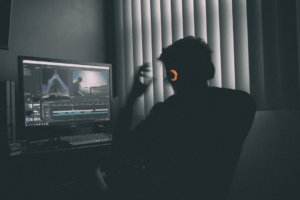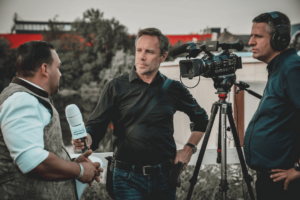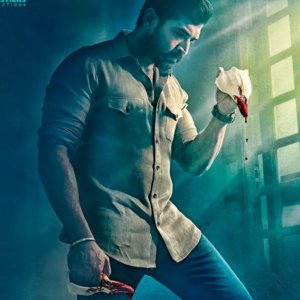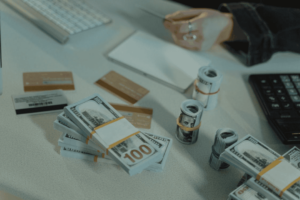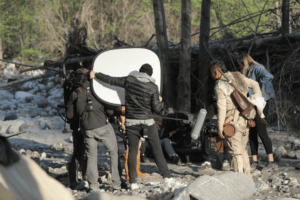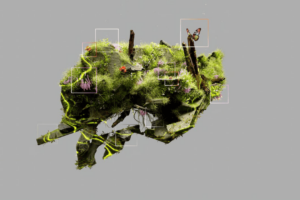A Dutch angle shot is a camera shot with a tilt on the camera’s roll axis. The point of this tilted perspective is to make viewers feel uneasy. Using a Dutch angle shot signals that something is wrong, unsettled, or disorientating. Dutch angle shots are also called:
- Dutch tilt shots
- Canted angle shots
- Canted camera shots
- Oblique angle shots
- Batman angle shots, as they were often used in the 1960s TV series
- German angle shots
Dutch Angle Shot Basics
Filmmakers use Dutch angle shots for impact. The best creatives understand the right time and place for Dutch angle shots.
The History of the Dutch Angle Shot
As one of its synonyms suggests, the Dutch angle shot actually originated in Germany instead of the Netherlands. Film historians suggest the term is a mistranslation of Deutsch angle shot, which directly translates to the German angle shot.
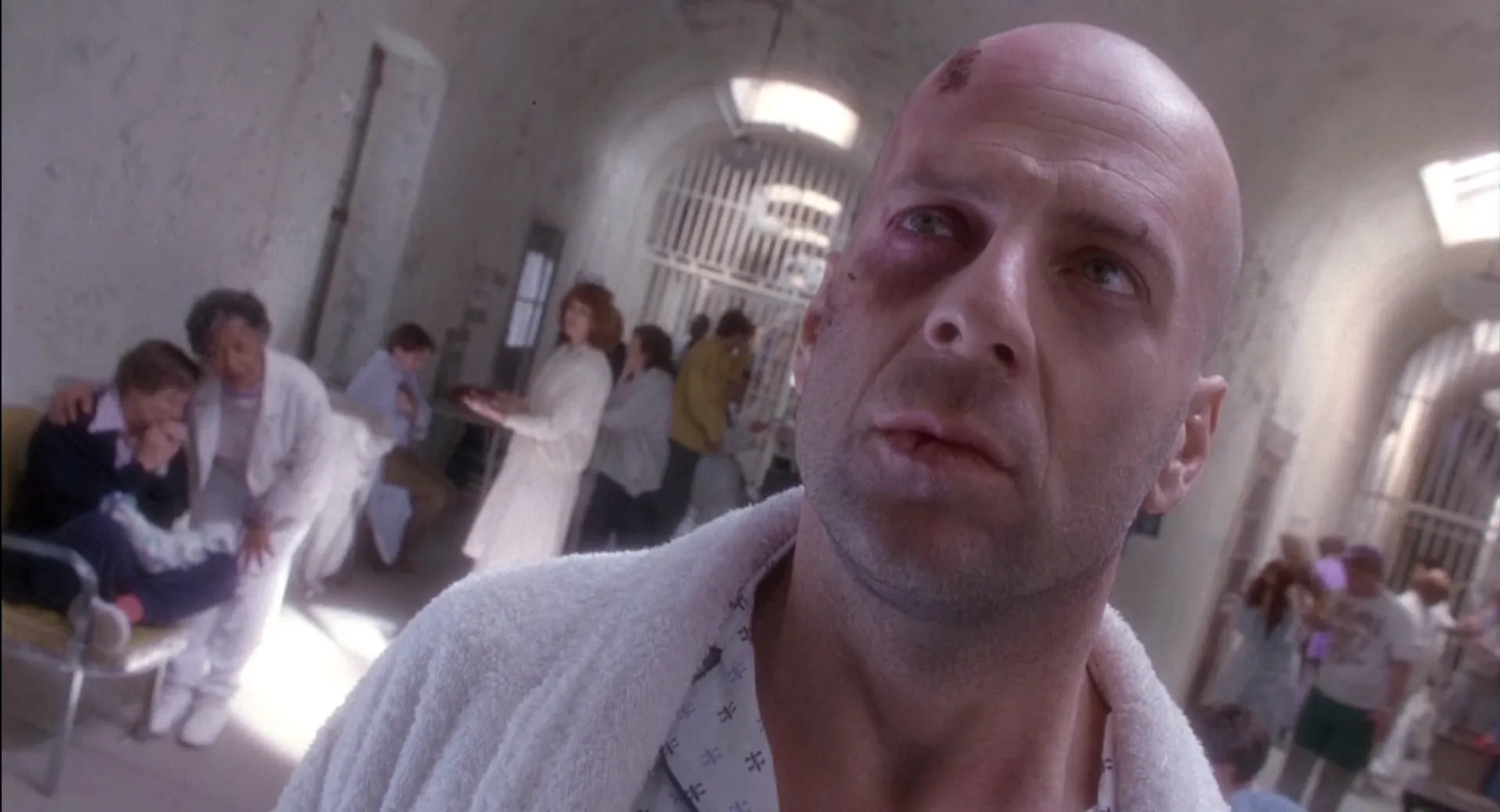
Image via No Film School
Robert Wiene pioneered the shot in his 1920 horror film “The Cabinet of Dr. Caligari.” He inspired other local expressionist directors such as F.W. Murnau, Erich Pommer, and Fritz Lang. As German creatives came to Hollywood, Dutch angle shots entered mainstream cinema. Innovators of the ‘30s and ‘40s, including Orson Wells, John Huston, and Alfred Hitchcock, all experimented with Dutch angle shots.
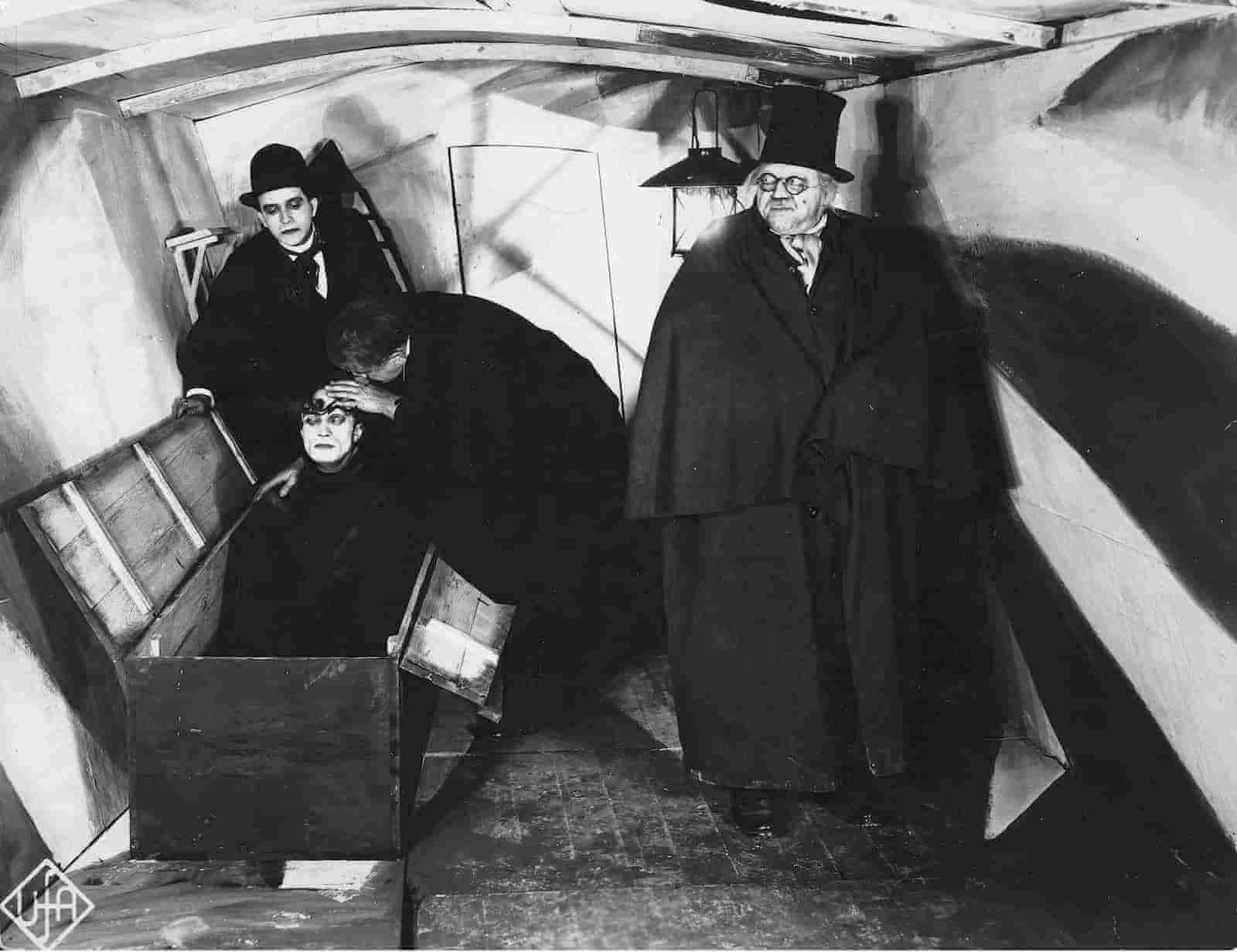
Image via StudioBinder
The Dutch angle shot remains popular today. “Fear & Loathing in Las Vegas,” “Batman Begins,” and “Slumdog Millionaire” are some modern movies known for their use of Dutch angle shots.
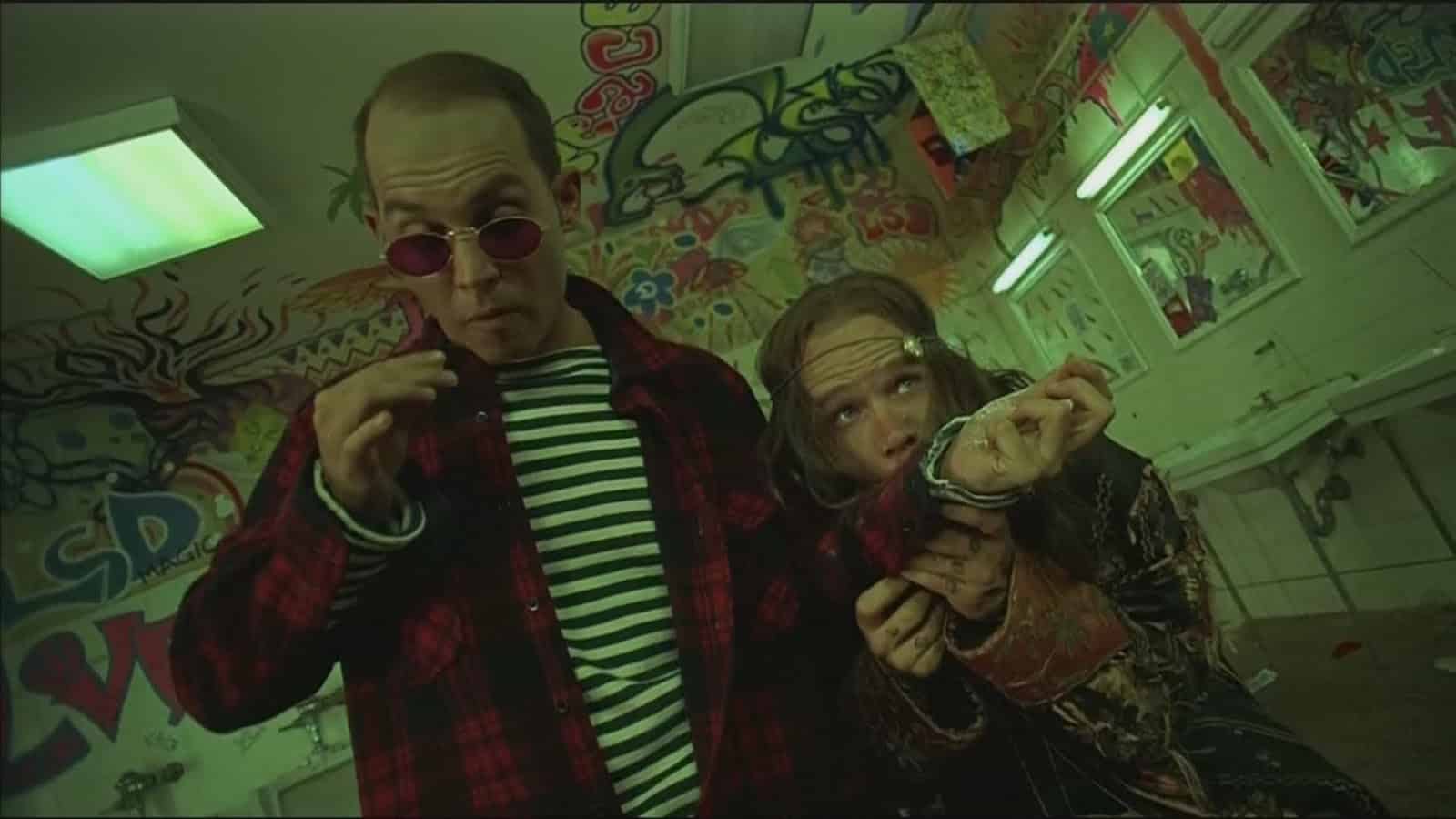
Image via StudioBinder
Dutch Angle Shot Examples
Exploring the ways filmmakers use Dutch angle shots can help you understand this filming technique and its impact.
“Snatch”
Guy Ritchie uses many Dutch angle shots in his crime comedy “Snatch.” These shots emphasize the movie’s theme of controlled chaos. In this scene, the Dutch angle shot heightens the tension as British bounty hunter Bullet-Tooth Tony threatens Sol.
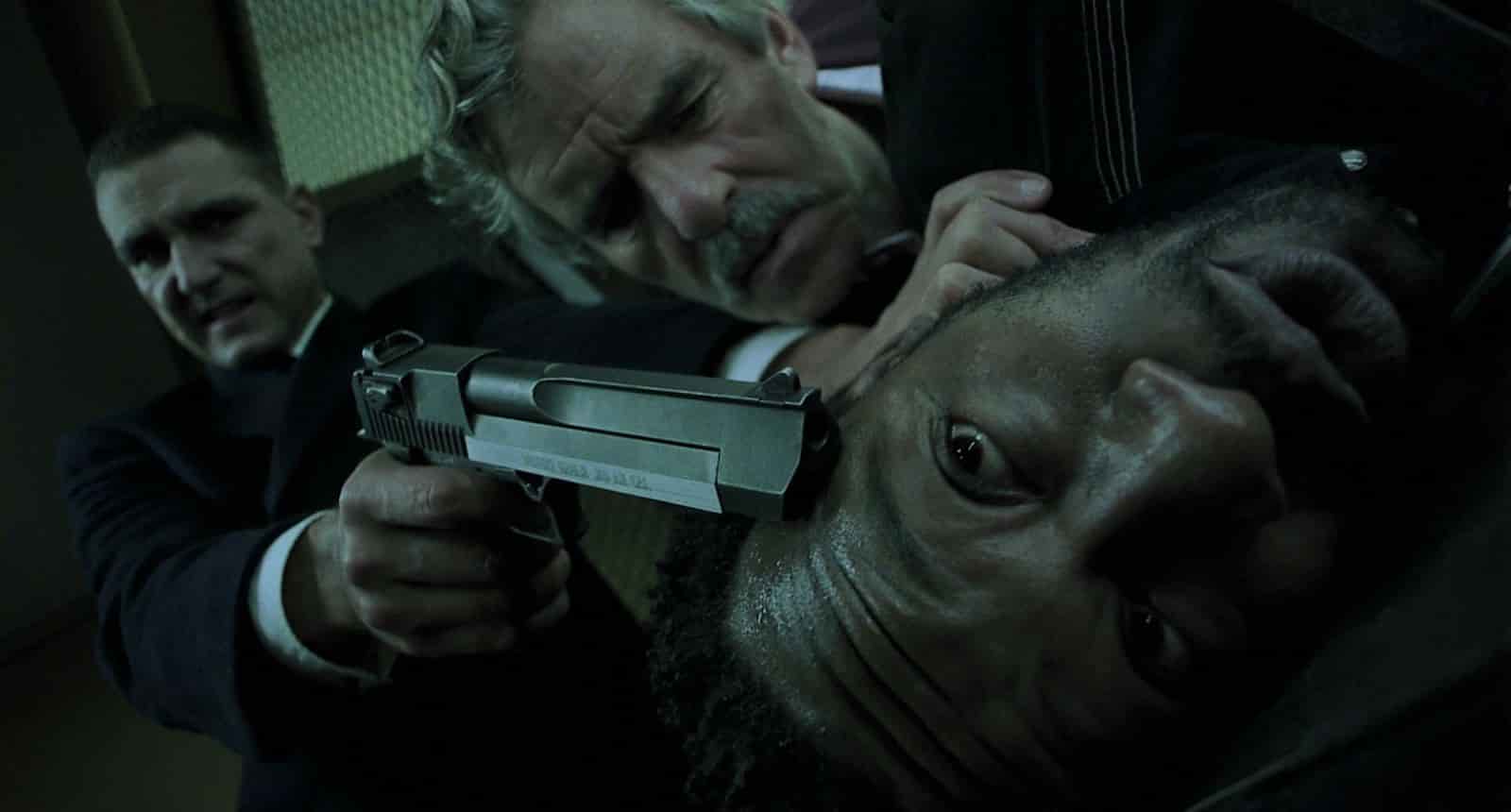
Image via StudioBinder
“Inglourious Basterds”
Quentin Tarantino favors unique camerawork in his films. In “Inglourious Basterds,” he uses Dutch angles to tell viewers when to keep their guards up. For example, the shot pictured below takes place just before a memorable but gruesome scene. As a fan of classic cinema, Tarantino’s Dutch angles may pay tribute to the silent-era German films that pioneered the shots.
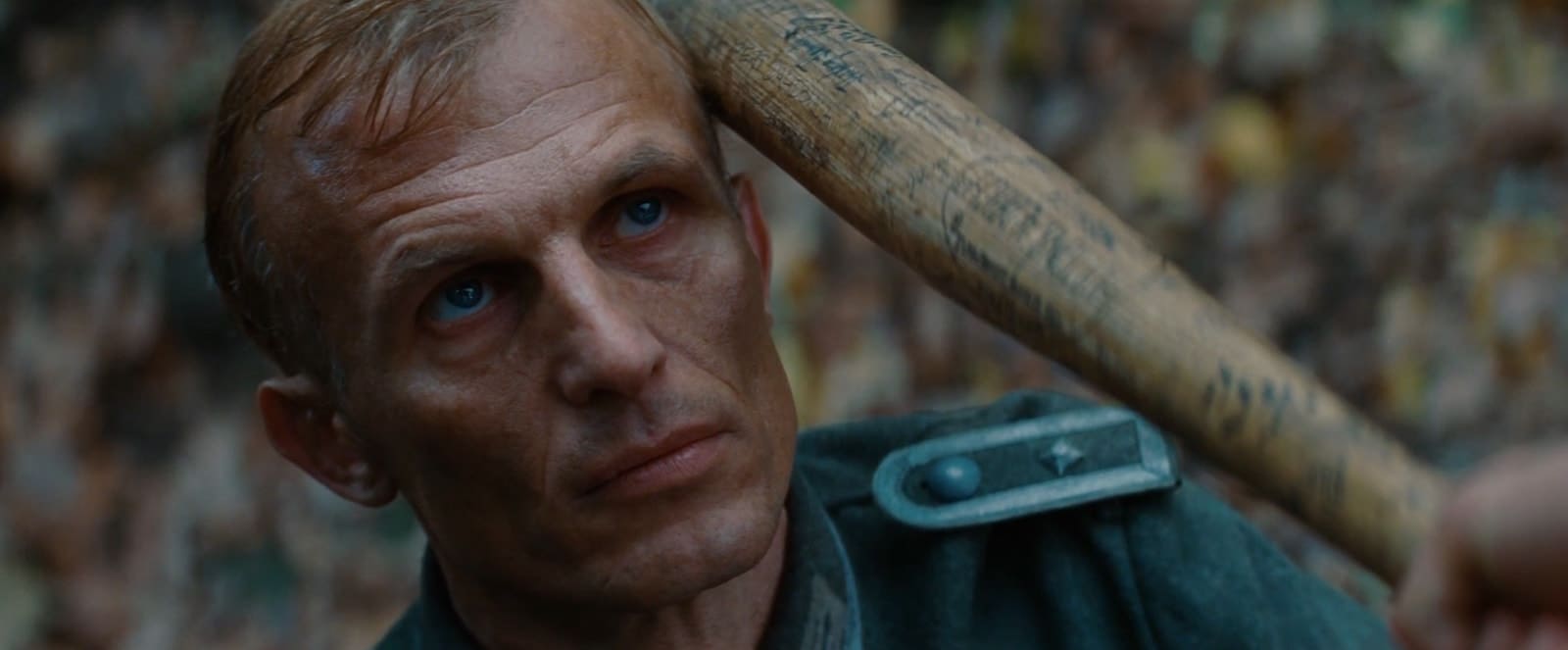
Image via StudioBinder
Dutch Angle Shot Example: “Inception”
The warped world of “Inception” created the perfect opportunity for Dutch angle shots. Christopher Nolan used these camera shots throughout his film, including the hallway fight scene. The Dutch angle shots put the audience into this scene, helping us see as we would if the world was turned upside down.
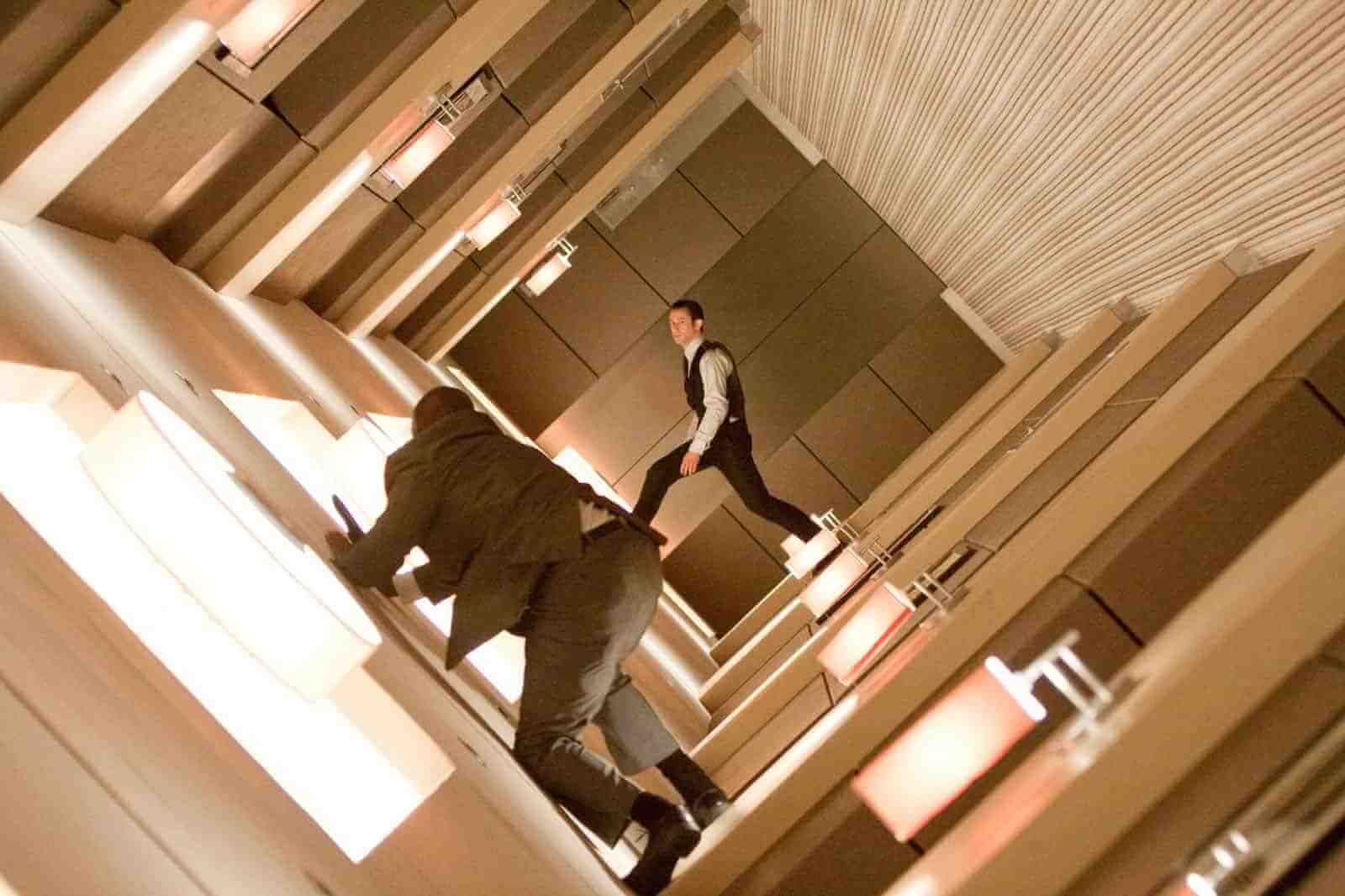
Image via StudioBinder
Dutch Angle Shot Example: “Harry Potter and the Deathly Hallows: Part 2“
David Yates used a Dutch angle shot to make this action sequence in the final Harry Potter film more exciting. The unusual shot creates an engaging sense of unease that helps viewers feel more invested in three lead characters’ fate.
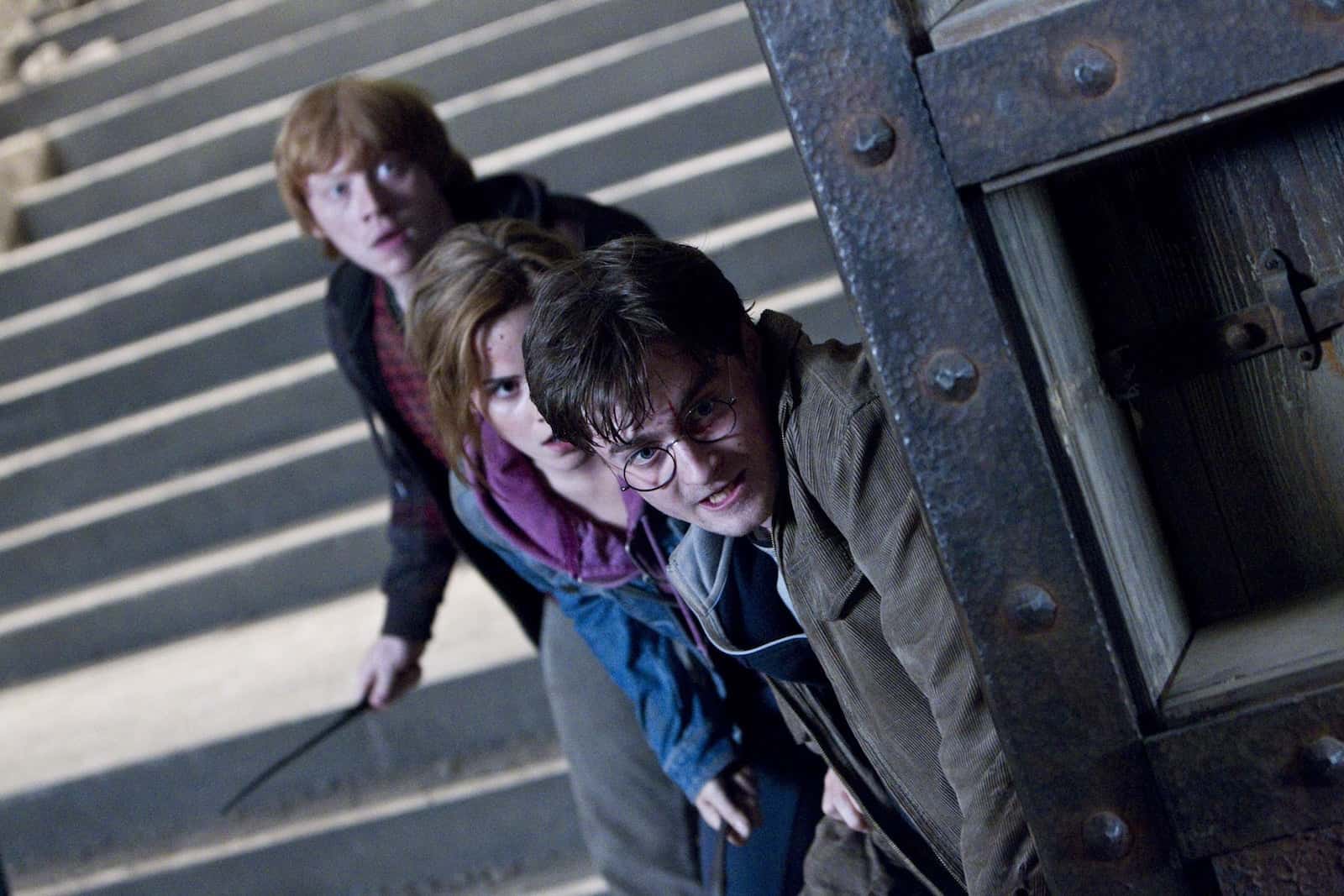
Image via StudioBinder
Dutch Angle Shot Example: “Do The Right Thing“
Spike Lee uses Dutch angle shots to reveal details about his characters. Mother Sister stays high in her brownstone apartment, observing the street below. Dutch angle shots reflect the way she surveys the scene below her. Radio Raheem is a large, intimidating character. The Dutch angle shots make us feel uneasy in his presence, hinting at the destabilizing force he will become.
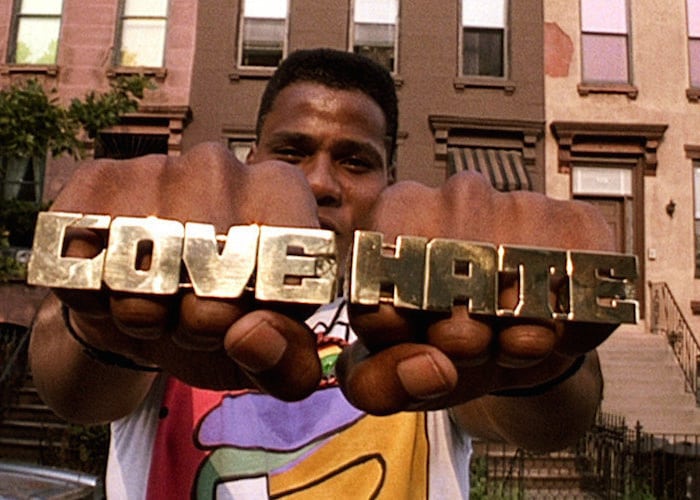
Image via Film School Rejects
Spike Lee’s Dutch angle shots are initially subtle. They become more pronounced as the day heats up and tensions increase. The takes also become lengthier, keeping the viewers feeling uneasy for longer until the film’s climax.
How Dutch Angle Shots Work with Other Camera Shots
Watching a film made entirely of Dutch angle shots would be difficult. The unusual angle would be disorientating and the impact would be lost. Instead, most filmmakers use Dutch angle shots sparingly for maximum effect.

Image via No Film School
To understand this, let’s examine the way Dutch angles work in a key “Mission: Impossible” scene. Brian De Palma used Dutch angle shots when Ethan Hunt learns he’s the CIA’s target. He likely went through a three-step process to decide how to use the shots in this scene.
1. Identify the Moment
Identifying the most effective moment for a Dutch angle shot is the first step. This step occurs when reviewing the script. The crucial moment is highlighted in this “Mission: Impossible” script.
Ethan Hunt joins his boss, Kittridge, at a restaurant following the murder of his entire team. To Hunt’s surprise, a second team of IMF agents attends the meeting. Hunt and Kittridge speak briefly until Hunt feels something is wrong. That moment suits Dutch angle shots. Hunt and the viewers don’t yet know Kittridge believes Hunt is the murderer, but the Dutch angles foreshadow this revelation.
Note that the script doesn’t mention the identity of the new IMF agents. Instead, it refers to “maybe a dozen patrons.” Their true identities are revealed later.
2. Consider the Entire Scene
Dutch angle shots are so effective because they’re surrounded by more conventional shots. Switching from normal shots to Dutch angle shots is visually jarring. Pay attention to the shots leading up to the Dutch angle shots.
A medium close-up shot of Hunt captures Tom Cruise’s character from slightly below eye level. While he is in conversation with Kittridge, this is a single shot, rather than an over-the-shoulder one. This is intentional because we see Hunt isolated and disconnected from Kittridge.
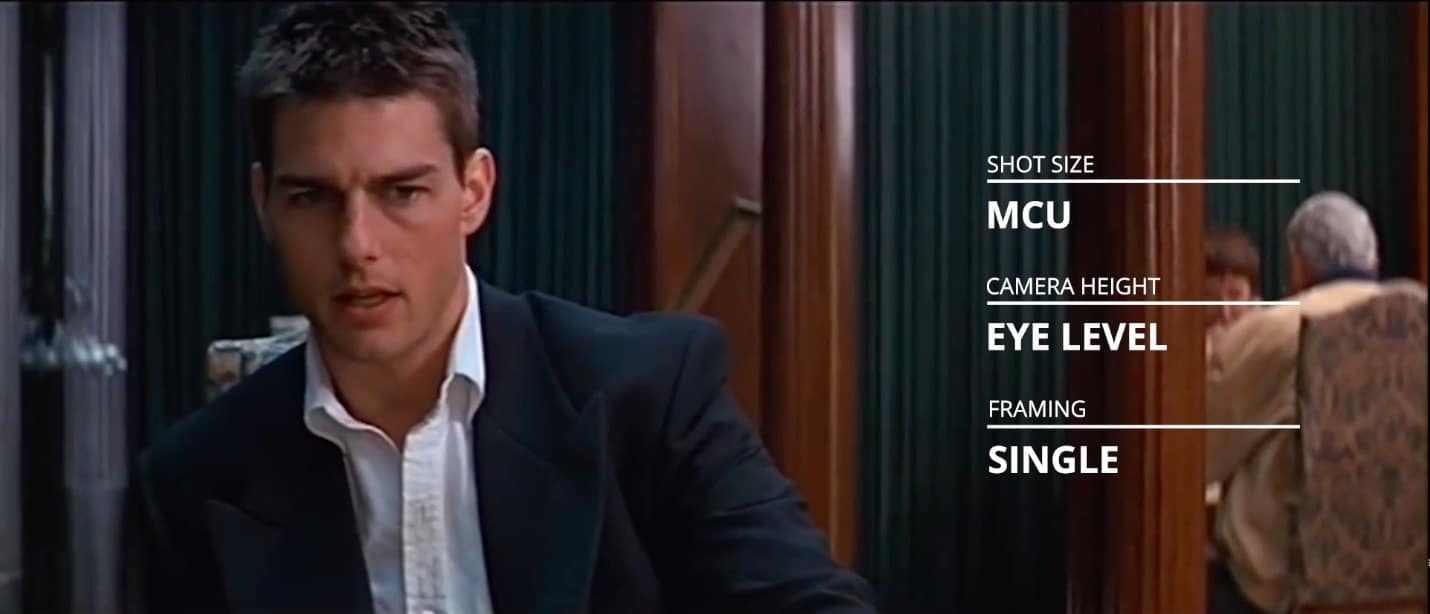
Image via StudioBinder
Then we see Kittridge in his own medium close-up shot. A member of the new IMF team is in the background, but of course, we don’t know that yet. The separate shots suggest the characters feel differently from one another. However, as the shots are so normal, there’s nothing to suggest anything is amiss.
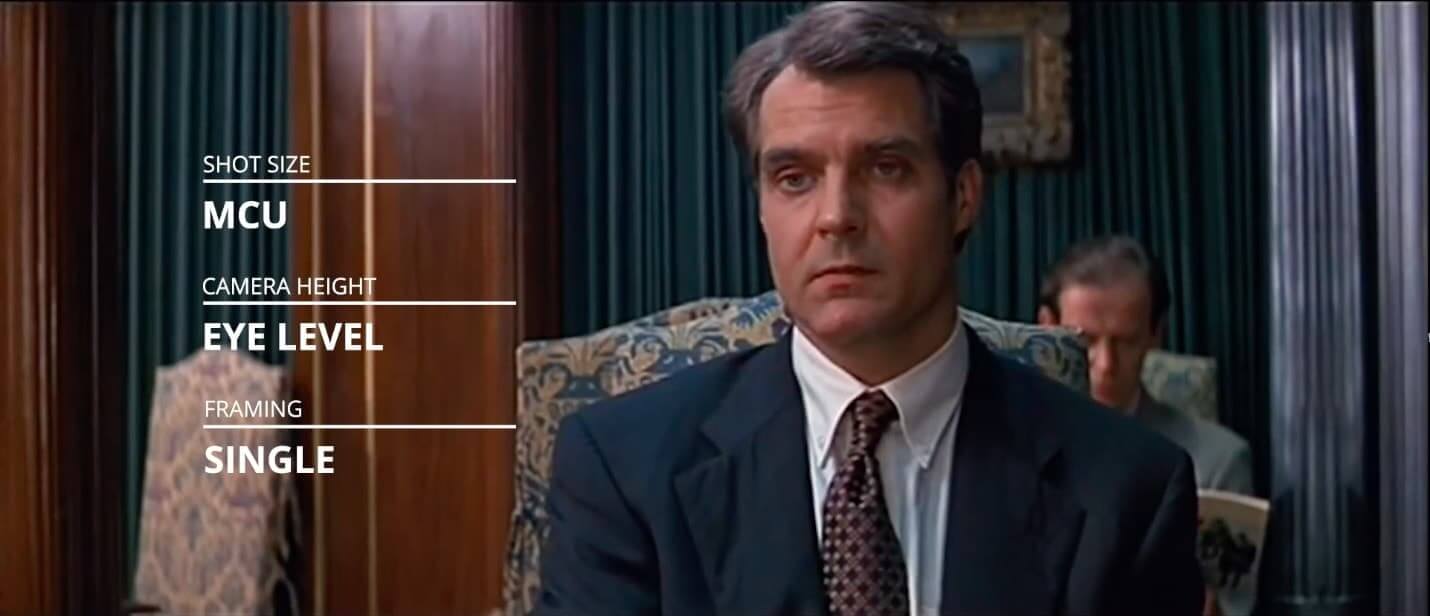
Image via StudioBinder
The next shot is a medium two-shot, showing both characters connecting in the frame. Pay attention to the slight tilt in their bodies. Kittridge leans forward to pass the document to Hunt, who has a slumped, defeated posture. There’s another IMF agent in the background here too, positioned behind Kittridge. This is no accident. It shows these agents have Kittridge’s back.
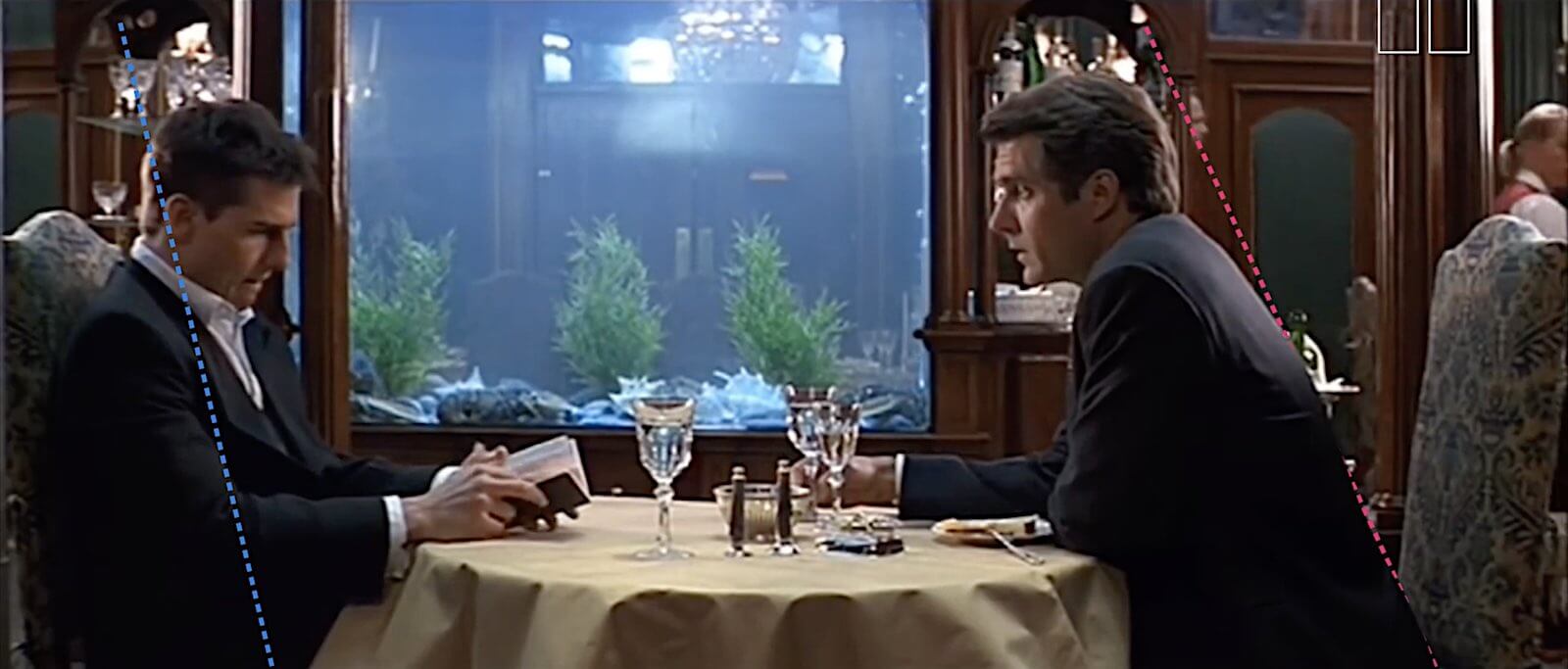
Image via StudioBinder
Single medium close-up shots are used again as the conversation continues. Hunt asks, “Why the other team?” Kittridge lies and the power shifts. We see Hunt’s unease at the situation play out visually with a new camera shot: the Dutch angle shot.
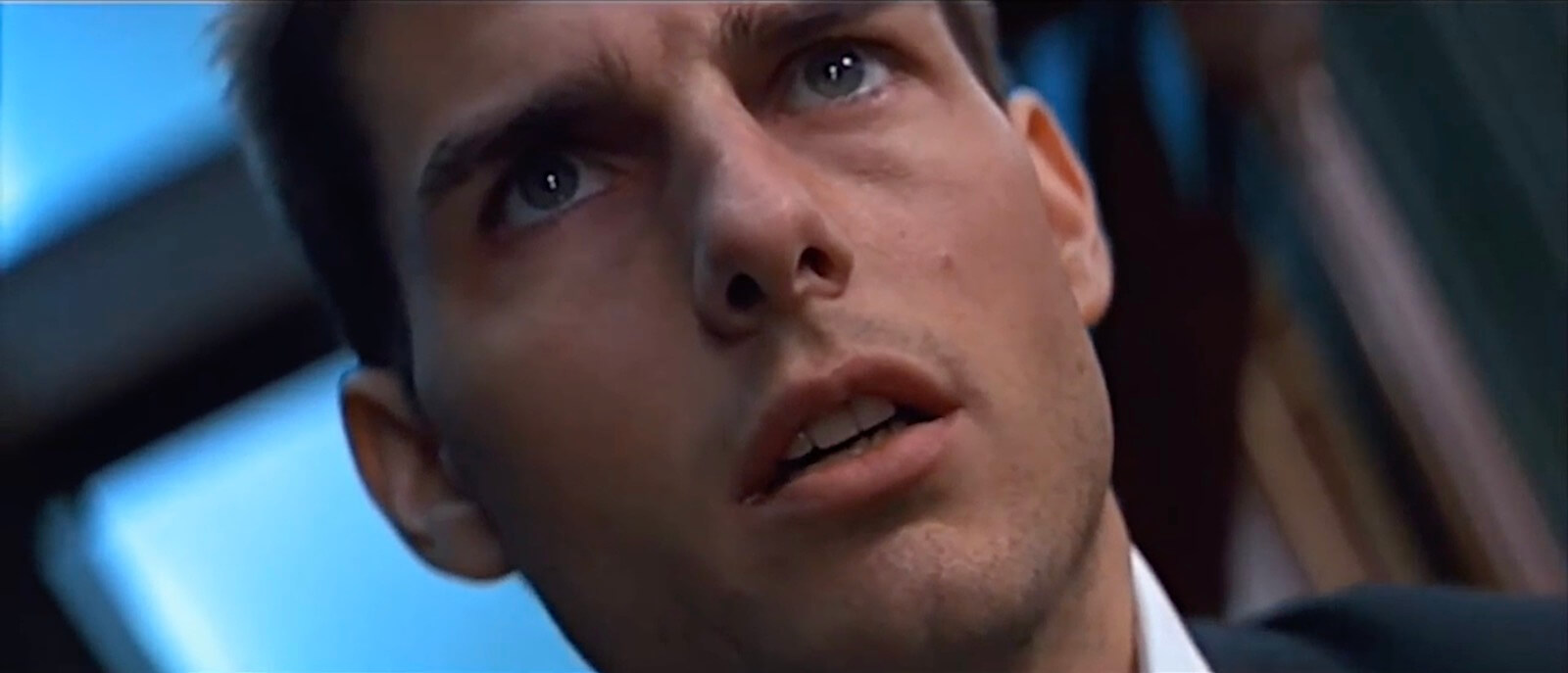
Image via StudioBinder
3. Enhance the Moment
After deciding to use Dutch angle shots, good filmmakers consider ways to enhance the shot. The following variables can enhance Dutch angle shots:
- Tilt degree: The tilt could be as subtle as 5 degrees or as substantial as 90 degrees. The greater the tilt, the more unsettling the shot feels.
- Depth of field: The shallower the depth of field, the more claustrophobic the viewer feels.
- Camera level: Varying the camera level can make us feel more or less connected to the characters.
![]()
Image via PetaPixel
De Palma uses different camera levels for each Dutch angle shot. Shots of Hunt keep the camera close to his shoulder level, so we connect with him and his predicament.
Shots of Kittridge have a much lower camera angle. This angle empowers Kittridge, making him seem hostile and menacing.
Why Does a Dutch Angle Shot Make Audiences Feel Anxious?
The brain easily processes standard horizontal-vertical lines, like those in standard camera shots. Assimilating the angled lines of Dutch angle shots is much harder. The shifted horizon confuses our brains and makes us feel anxious and uneasy.
![]()
Image via PetaPixel
Using Dutch angle shots is an excellent way to stir viewers’ emotions and add interest to a film. However, for the greatest impact, filmmakers must learn how to use them with other camera shots. To learn more about developing and applying techniques like the Dutch angle shot, join the Cinema Product Diploma program at Nashville Film Institute today.

